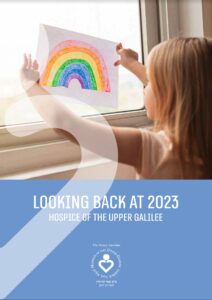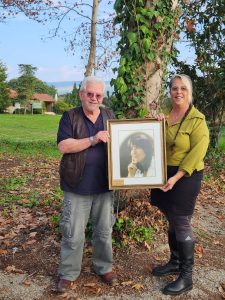People may sometime wonder whether there is a difference between palliative care and hospice services, and if so, what is it?
It can be said that the former is the type of treatment and the latter is the treatment framework.
The field of palliative care has developed considerably in recent years following its definition by the World Health Organization (WHO) in 1990 as ‘… an approach that improves the quality of life of patients and their families facing the problem associated with life-threatening illness, through the prevention and relief of suffering by means of early identification and impeccable assessment and treatment of pain and other problems, physical, psychosocial and spiritual.’
Palliative care in hospice
The question was where could this kind of treatment be offered in the most appropriate, supportive and efficient manner? From this point on, specialized treatment and assistance units – hospices – began to develop.
The Hospice of the Upper Galilee, established in 1994 by the late Prof. Nancy Caroline, adopted WHO’s definition and helps to treat and support terminal patients and their families by providing free house hospice services.
The purpose of these services is to allow the patient to stay at home among his family members until the last stages of his life, while providing all necessary assistance.
One of the important principles of such assistance, even though it is given in a home hospice unit, is the obligation to provide the patient and the family with 24/7 treatment, based on the understanding that the patient’s needs are urgent.
The support and assistance that the patient and his family will receive are part of the palliative care.
What should you know about palliative care?
- This treatment is intended to facilitate and improve the quality of life of terminally ill patients and their families, primarily by alleviating their pain and accompanying symptoms.
- This is a comprehensive approach that treats the patient as a whole person. In addition, it treats the patient, his family and those around him as a single treatment unit.
- This is a multidisciplinary therapy that provides support and concern for the emotional, psychosocial and spiritual well-being of the patient and his environment; a treatment that combines and coordinates all the factors involved, making it easier for the patient and his entourage to cope.
- This is a treatment that emphasizes communication as a central skill.
- This is a treatment that says ‘when there is no time we need more time’ – time for listening, time for self examination in order to make a proper ‘closure’. Or as Prof. Nancy Caroline, the late founder of the Hospice of the Upper Galilee, said: ‘The most important gift that the hospice can give the patient and his family is time.’
Terminal patient care has become one of the major issues that have preoccupied healthcare systems in recent decades. The concept that a terminal patient is entitled to the most appropriate treatment for the time nearing death, is expanding in the health systems worldwide and of course in Israel as well. The Hospice of the Upper Galilee, with help from AFHUG (American Friends of the Hospice of the Upper Galilee) is the one that provides these services in the north of Israel.





